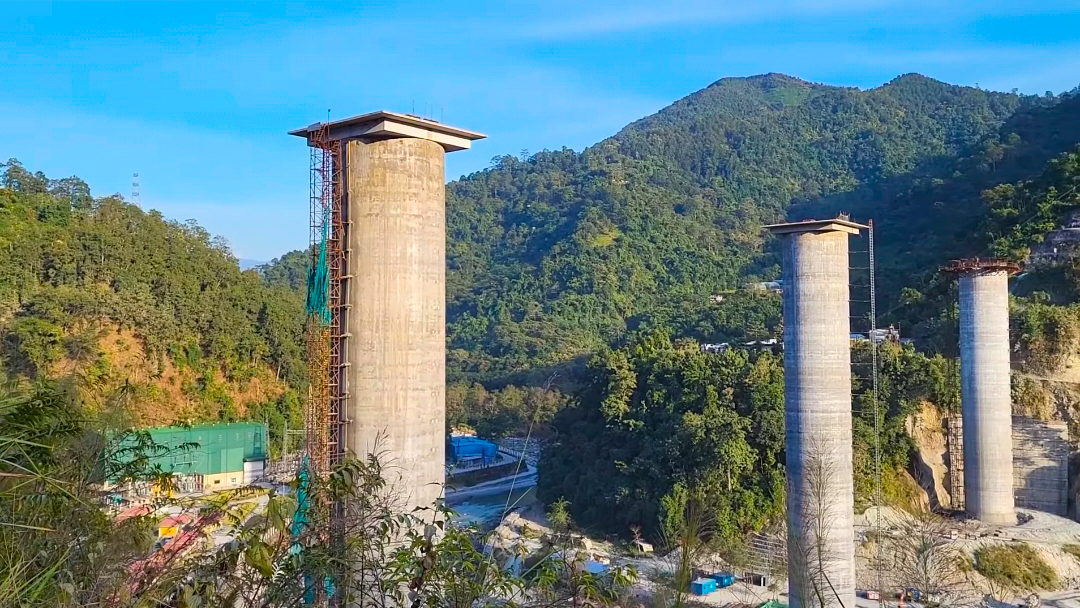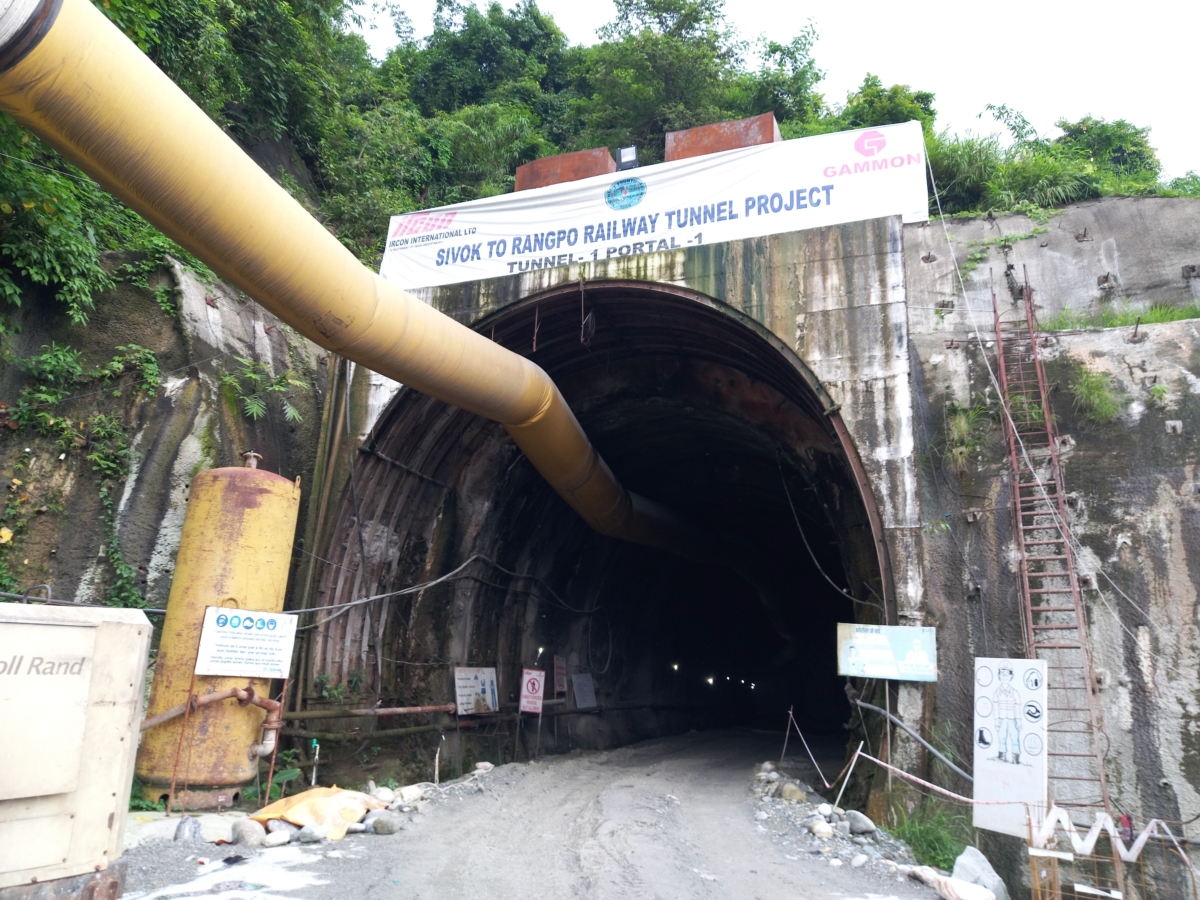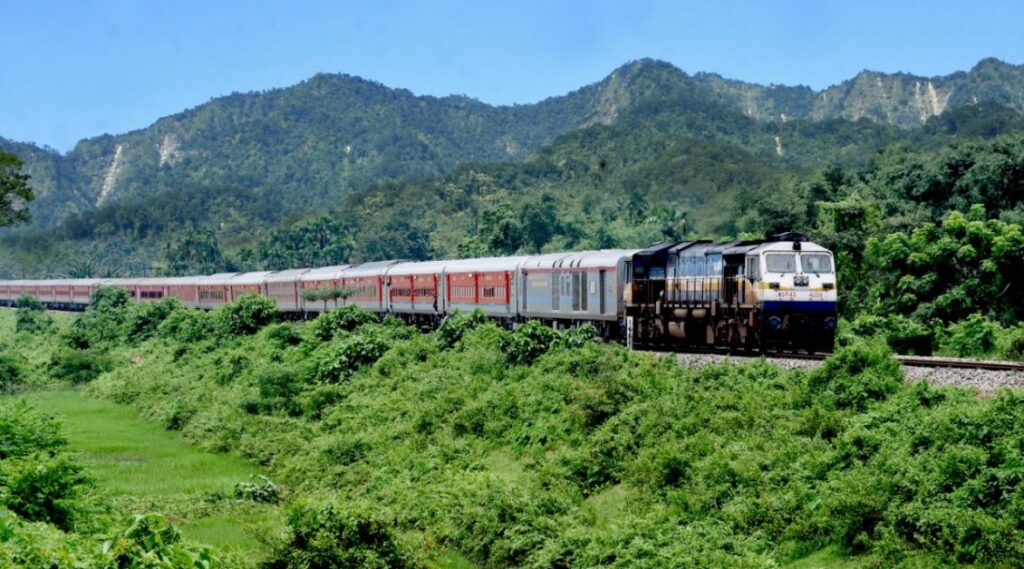In a significant move aimed at transforming connectivity and bolstering tourism prospects, the Sivok-Rangpo Railway Link project is set to revolutionize the transportation and tourism scenario in the northeastern state of Sikkim and expected to be operational by the end of this year or the early 2025.
The Sivok-Rangpo Railway Link project, initiated in October 2009, was conceived to bridge the connectivity gap between West Bengal and Sikkim and now is in the final phase of completion. The project further aims to extend connectivity in the region and is divided into three phases: from Sevoke to Rangpo, from Rangpo to Gangtok, and from Gangtok to Nathula at the Indo-China border in East Sikkim.
This train route from Sevoke in West Bengal to Rangpo in Sikkim, will feature 28 bridges and 14 tunnels, with approximately 38.5 kilometers of the track passing through tunnels. The railway track is set to be constructed along the foothills of the Kanchanjungha mountain range and will offer passengers a scenic journey, spanning deep gorges and valleys of the picturesque Teesta river.
As part of the project, Rangpo Railway Station is set to become Sikkim’s first railway station and is nearing completion, with operations slated to commence by December 2024. Additionally, another station, Teesta Bazar, is expected to become India’s first underground railway station.
The advent of the Sivok-Rangpo Railway Link is poised to transform tourism in Sikkim by providing seamless connectivity to travelers. Presently, travelers rely on major railway stations like Siliguri and New Jalpaiguri, located over 100 kilometers away from Gangtok, Sikkim’s capital. However, the direct railway connection to Sikkim will revolutionize travel logistics, reducing transit time and enhancing the overall tourism experience as the Rangpo Railway Station is situated just 38 kilometers from Gangtok and 21 kilometers from Pakyong, Sikkim’s sole airport.
On the other side neighbouring West Bengal’s Tista Bazaar Railway Station, also known as Teesta Bazaar Railway Station, is an upcoming underground railway station situated in the vicinity of Teesta Bazar, serving the surrounding areas such as Kalimpong, Tribeni, Lopchu, Peshok, and Chitrey in the Kalimpong district of West Bengal.
Notably, Teesta Bazaar Railway Station holds the distinction of being India’s first underground railway station, marking a significant milestone in the country’s railway infrastructure development. Currently under construction, this underground station is poised to enhance connectivity and accessibility for residents and visitors alike in the region.

Key Details of the Sikkim’s First Railway Link
- Name: Sivok-Rangpo Railway Link
- Rail Route: Sevoke (West Bengal) to Rangpo (Sikkim)
- Length of final alignment: 44.98 km
- Stations en route: Riang, Gailkhola, Teesta Bazaar, Melli
- Nearest junction: New Jalpaiguri (30 km from Sevoke through Siliguri)
- Route under tunnels: 38.53 km (86%)
- Number of bridges: 28
- Number of tunnels: 14
- Longest tunnel: 5.1 km
The Sivok-Rangpo Railway Line traverses through diverse terrain and landscapes, including significant natural reserves and river systems, making it a remarkable feat of engineering and environmental consideration. Here’s a detailed overview of the route:
Passing through Natural Reserves and River Systems: The railway line passes through the Mahananda Wildlife Sanctuary, a protected area known for its rich biodiversity and diverse ecosystem. This sanctuary is home to various species of flora and fauna, and the railway line’s passage through it necessitates careful planning to minimize ecological impact.
Additionally, the line crosses the River Teesta and River Rangpo, two vital water bodies in the region. These rivers not only contribute to the local ecosystem but also serve as important water sources for surrounding communities. The railway line’s alignment along these rivers underscores the need for environmental conservation and protection of water resources.
Route through Villages and Towns: As the railway line winds its way from Sivok to Rangpo, it passes through several villages and towns, each contributing to the unique cultural tapestry of the region. These include Kalijhora, Birik Daara, Lohapul, Rambi Bazar, Gailkhola, Teesta Bazaar, Chitrey, Melli, Kirnay, Tarkhola, Chanatar, Rangpo, and Khanikhola, among others.
Traversing Forest Divisions: The line traverses through various forest divisions, including the Darjeeling Forest Division, Kurseong Forest Division, and Kalimpong Forest Division of West Bengal, as well as the Pakyong District Forest Division of Sikkim. These forested areas are not only ecologically significant but also play a crucial role in maintaining the region’s biodiversity and providing habitat for wildlife

Environmental Considerations: Given the sensitive nature of the areas through which the railway line passes, environmental considerations are paramount. Measures such as wildlife corridors, eco-friendly construction practices, and mitigation of environmental impact have been incorporated into the project to ensure minimal disruption to the natural surroundings.
Overall, the Sivok-Rangpo Railway Line’s route showcases the intricate balance between development and environmental conservation, highlighting the importance of sustainable infrastructure development in ecologically sensitive regions. Through careful planning and implementation, the railway line aims to enhance connectivity while preserving the natural heritage of the areas it traverses.
Gangtok to Nathula by Train
The plan of extending the railway line further to Gangtok and then to Nathula, at the Indo-China border, marks a significant milestone in the project’s trajectory. Nathula, nestled amidst the breathtaking landscapes of the Himalayas, holds immense historical and strategic significance. As a popular tourist destination, it attracts visitors keen to witness its natural beauty and explore its cultural heritage. The railway extension to Nathula will open up new avenues for tourism development, offering travelers an unforgettable journey to this iconic destination.
Reducing Dependence on Roads:
The completion of the Sivok-Rangpo Railway Link and its subsequent extension will significantly reduce reliance on road transportation for accessing Sikkim. Currently, the nearest major railway stations, Siliguri and New Jalpaiguri, serve as the main gateways to Sikkim for railway passengers. The introduction of railway connectivity directly to Sikkim will streamline travel logistics, reduce travel time, and enhance the overall tourism experience for visitors.
The Sivok-Rangpo Railway Link project and its extension to Gangtok and Nathula represent a transformative initiative that holds the key to unlocking Sikkim’s tourism potential. By enhancing accessibility, reducing travel barriers, and providing seamless connectivity, the project is poised to elevate Sikkim’s position as a premier tourist destination in the Himalayan region. As the railway network expands and evolves, travelers can look forward to embarking on unforgettable journeys to discover the enchanting beauty and rich cultural heritage of Sikkim.

